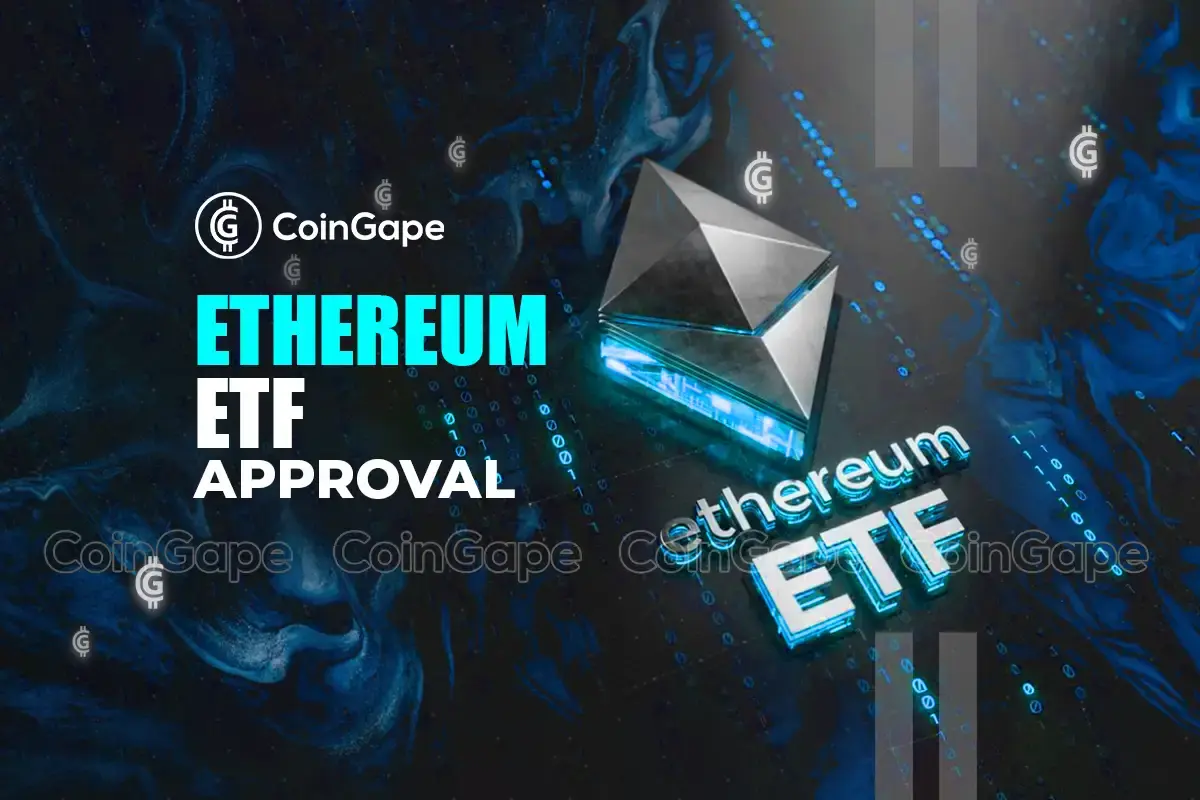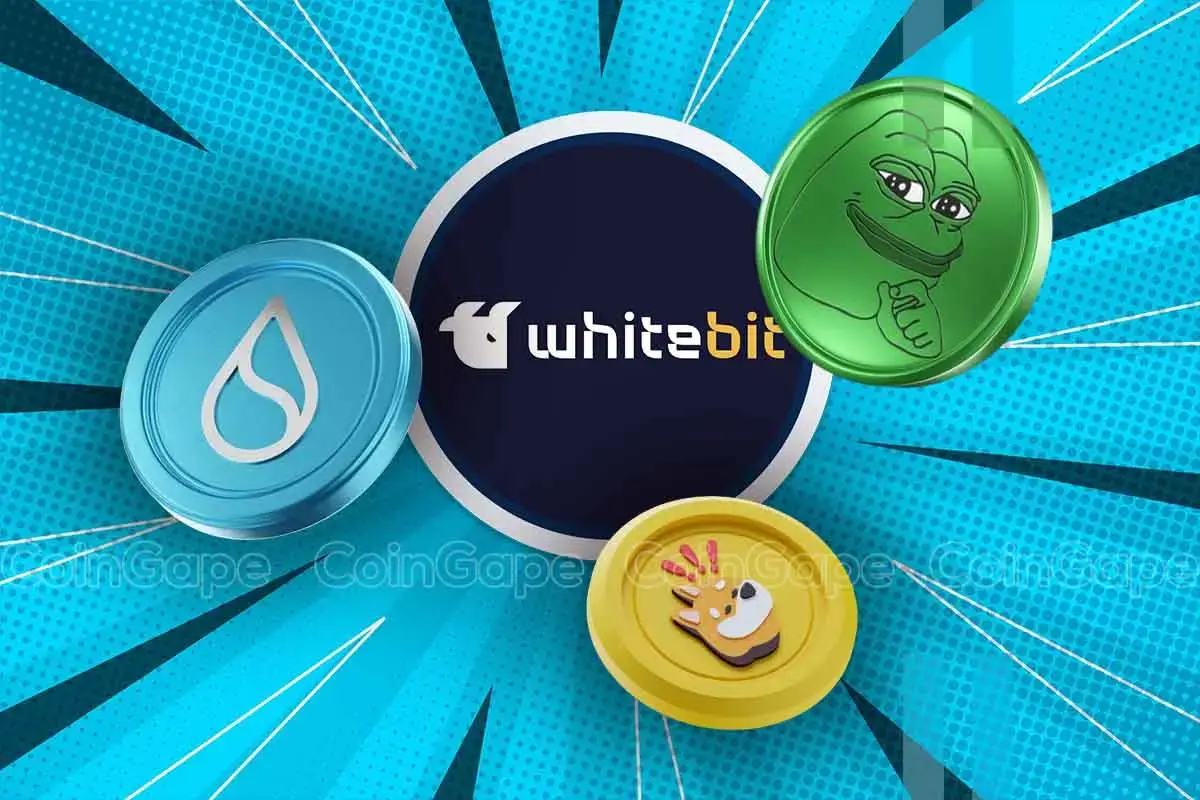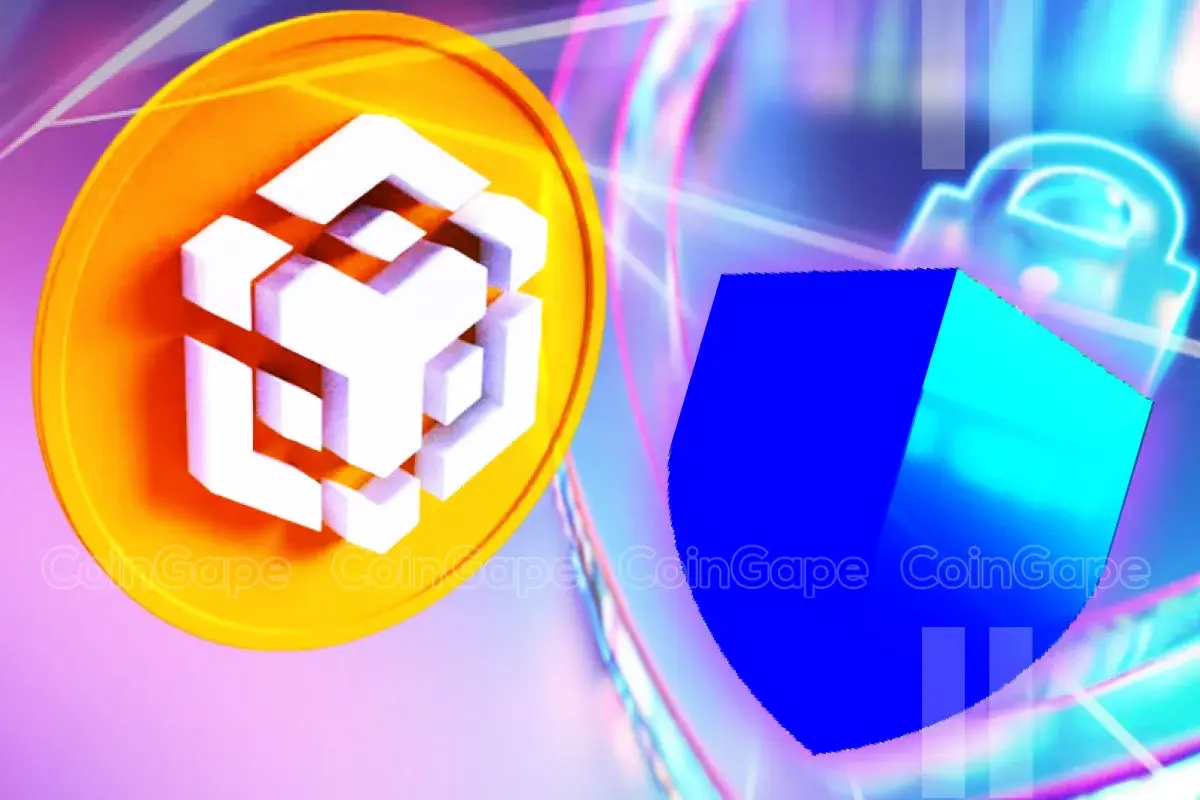blog
The Impact of Ethereum ETF Approval on Crypto Market: Trends and Industry Challenges
Published
5 months agoon
By
admin
The cryptocurrency community is waiting in anticipation of the arrival of Ethereum Exchange-Traded Fund (ETF), with increasing discussions surrounding the potential impact on Ethereum, and the global crypto market. These ETFs, speculated to be launched next week, are anticipated to affect ETH price. Eric Balchunas, senior ETF analyst at Bloomberg highlighted in May, that demand for Ether ETFs may not match that of Bitcoin spot ETFs. This article explores the implications of Ethereum ETF approval, current trends, and the challenges encountered in this changing environment.
What is an Ethereum ETF?
An Ethereum ETF is an investment tool that tracks Ether’s price, enabling investors to buy shares that represent the digital currency without the hassle of buying and storing it firsthand. Investors will find it more convenient to access Ether through these ETFs, which will be available for trading on regular stock markets.
The approval of these ETFs is considered a significant achievement for the cryptocurrency sector, possibly attracting increased institutional investment and wider adoption of digital assets.
Trends in Ethereum ETF Approval
The hype surrounding Ethereum ETFs is increasing as institutional interest in crypto grows. Take a glimpse at a few important developments influencing the Ethereum ETF environment:
1. Institutional Investment Surge
Ethereum ETFs are becoming a promising option among institutions venturing into cryptocurrency investments. The approval of Ethereum ETFs is viewed as an important move in connecting traditional finance with the world of cryptocurrency.
2. Regulatory Developments
Regulatory bodies are placing more emphasis on the cryptocurrency market. Recent Ethereum ETF approval and the developing regulatory structure for Ethereum ETFs demonstrate a more organized strategy for cryptocurrency investment, which boosts credibility and investor confidence.
3. Market Sentiment Shifts
The approval of Ethereum ETFs has led to a rise in interest from retail and institutional investors alike. The increased interest in Ethereum and its potential is reflected in the growing trading volumes and media attention.
Impact of Ethereum ETF Approval
The approval of Ethereum ETFs is expected to have several profound effects on the cryptocurrency market:
The cryptocurrency market is anticipated to undergo various significant changes as Ethereum ETFs are approved
1. Enhanced Legitimacy
The U.S. SEC’s Ethereum ETF approval is a move towards validating the cryptocurrency industry. This acceptance comes after thorough examination and numerous changes to the documents submitted to resolve regulatory issues.
The action is anticipated to open the door for wider adoption and incorporation of cryptocurrencies into traditional finance. Nevertheless, regulators are closely monitoring the industry, and any alterations in regulatory position might affect the performance and acceptance of these ETFs.
2. Increased Market Liquidity
Increased liquidity in the market is anticipated with the introduction of Ethereum ETFs, which will attract considerable institutional investments, improving market stability. This may result in a more stable and mature market environment, drawing in a wider variety of investors.
3. Price Implications
After the SEC approved it, Ethereum price increased by 22%, showing rising investor belief.
Historically, Ethereum ETF approvalhave had a positive impact on the price of the underlying asset. If Ethereum ETFs follow this pattern, we could see a price surge as new capital flows into the Ethereum market.
Analysts expect substantial institutional inflows into Ethereum, with Standard Chartered projecting that these new financial products could drive the price of ETH to $8,000 by the end of 2024.
Longer-term projections are even more bullish, with prices potentially reaching $14,000 by the end of 2025.
The Ethereum ETF approval has a history of benefiting the price of the asset it is based on. Should Ethereum ETFs mimic this trend, we may witness a spike in prices due to an influx of new investment in the Ethereum market.
As analysts forecast institutions to invest significantly in Ether, Standard Chartered has boldly predicted the price of Ethereum to soar to $8,000, as the year comes to an end. Other bullish forecasts have set $14,000 as the value of Ether, by the closure of 2025.
The capital coming in from these ETFs is expected to have a big effect on Ether’s price because it is less liquid than Bitcoin. This implies that even minor influxes can cause a significant price effect.
At the time of writing, Ethereum price is trading at $3,467.66, showing an increase of 3.00% and 12.46%, over the past day and week, respectively.


4. Competing Products and Broader Crypto Market Impact
The arrival of Ether ETFs may also impact current products such as the Grayscale Ethereum Trust, which has experienced a reduction in its discount from more than 20% to only 1%.
This suggests growing investors’ confidence in the fund’s potential conversion into an ETF. The approval of Ether ETFs is predicted to have a positive influence on Bitcoin too. This is because credibility they provide could propel Bitcoin price to reach new record levels, boosting optimism within the cryptocurrency market.
Industry Challenges Surrounding Ethereum ETF Approval
Despite the promising outlook, several challenges need to be addressed:
1. Regulatory Hurdles:
Overcoming the complex and evolving the U.S. regulatory landscape continues to be a major obstacle. Various countries have different rules for cryptocurrency ETFs, and obtaining worldwide acceptance can be a complex and time-consuming procedure.
The performance of Ethereum ETFs may be affected by any negative regulatory decisions.
2. Market Volatility:
Cryptocurrencies, including Ethereum, are known for their price fluctuations. Although ETFs can offer stability, there may be increased volatility in the market during the period, immediately following Ethereum ETF approval as adjustments are made.
The inclusion of ETFs in the market may increase fluctuations, posing risks for both investors and fund managers. This should be taken into account by investors when strategizing their entry and exit plans.
3. Security Concerns:
Putting in mind that there are risks related to the storage and transactions of cryptocurrencies, it is vital to enhance ETF security. Therefore, it is essential to address these concerns, to boost the confidence of investors, and prevent potential losses.
Conclusion
The Ethereum ETF approval marks a significant development in the cryptocurrency industry, indicating growing interest from institutions and the possibility of market growth. Despite facing obstacles, the approval of ETH ETF is expected to have a positive impact by increasing the credibility and trading volume in the Ethereum market. Being aware of the changing landscape is essential for investors and industry players.
Source link
You may like


Bitcoin Price Retests Support Line After Crash Below $95,000, Here’s The Next Target


Michael Saylor Doesn’t Understand Bitcoin


Cardano and Solana lead institutional discussions, analysts spot a rising altcoin


Pro-XRP Lawyer John Deaton Comments On New Crypto Tax Rule


Release Date for Incarcerated Former FTX Exec Ryan Salame Moved Up by a Year


Debt: Bitcoin Is Not A Return To Stateless Money, It Is the First
blog
WhiteBIT Adds Pepe, Bonk, Sui & 57 New Crypto to Expand Collateral Options to 80
Published
2 days agoon
December 26, 2024By
admin
WhiteBIT, a leading European cryptocurrency exchange has significantly expanded its collateral offerings by adding 60 new cryptocurrencies. This raised the total number of collateral assets supported to over 80 and added more versatility to the trading platform. Amongst those newly included assets were the likes of PEPE, BONK, SUI, DAI, AAVE, and many more, allowing access to numerous strategies touching borrow, margin, and futures trading.
With the expansion, it looks to focus on remaining relevant in the changing cryptocurrency market. The exchange boasts up to 5.5 million users and brands itself as a one-stop solution for retail and institutional traders. Moreover, through expansion and offering an expanded range of collateral assets on the platform, it seeks to enhance the user’s ability to risk manage while using many other trading strategies.
WhiteBIT Expands Collateral Offering with 60 New Cryptocurrencies
WhiteBIT’s expansion in offerings is largely driven by the growing demand for such features within the industry as noted by the company. With the new additions, It supports more than 80 collaterals, allowing users to choose a variety of assets for their margin and futures trading. This further highlights the increasing demand for the assets including PEPE, BONK, SUI, DAI, AAVE, as well as many others.
While other traders like the niche collaterals of newer tokens that are in contrast to major leans on trading such as bitcoin and Ethereum, such flexibility WhiteBIT is propagating this through its extension. When it tosses these assets into its system, then WhiteBIT has expanded platform capabilities that enable different types of trading. With new opportunities coming in, users can now use tokens such as PEPE or BONK for more questionable trades or for stablecoins like DAI to encrypt trade in case of fluctuating prices.
The focus on bringing in these new collateral assets points to the ability of this exchange to adapt and innovate in a competitive surrounding. The exchange is based on the customer-focused approach which allows both retail clients as well as institutional customers getting access to many advanced trading features that require greater liquidity, such as leveraged trades and margin loans from a very limited number of tokens.
The Growing Importance of Collateral in Cryptocurrency Trading
The fact that there are more than 80 assets integrated as collateral on WhiteBIT shows how important this collateral is in our cryptocurrency exchange era. The key benefit that WhiteBIT will benefit from is the opportunity to provide users with options that would best fit their risk profiles by using different assets. This is largely due to the use of collaterals in margin, futures trading, and other activities through leveraging cryptocurrency ownership as a crucial aspect of the ecosystem.
Currently, with a new type of collateral framework introduced in WhiteBIT, users can now diversify their risk on a relatively wider range of assets instead of basing it on a few. Additionally, the system allows immediate marking to market of collateral that helps traders keep track of their open positions in case their trades were liquidated. This comes in especially handy where prices become very volatile and change promptly.
The increase in collateral that is provided over the counter exchange is a strategy that more and more of the cryptocurrency exchanges are adopting as they seek to improve their platforms and reach more people. By allowing several collaterals, WhiteBIT becomes a simple exchange that meets the needs of both first-time traders and those relatively familiar with trading.
Additionally, 60 new assets can be used for crypto lending, unlocking new opportunities for those looking to invest and earn income effectively. Crypto Lending allows you to lend your cryptocurrencies to WhiteBIT by selecting a flexible plan of 30, 90, 180, or 360 days. It offers the opportunity to earn up to 13.49% annual income in the same cryptocurrency you lend. This unique tool is ideal for crypto traders seeking to grow their assets with minimal risk.
WhiteBIT Spot and Futures Trading Volumes, and WBT Token Performance
WhiteBIT has become the first cryptocurrency exchange to obtain a Level 3 certification under the Cryptocurrency Security Standard (CCSS). It continues to perform strongly in both spot and futures trading markets. The platform’s spot trading volume has surpassed $6.1 billion in the last 24 hours, reflecting its prominence in the European cryptocurrency market. This robust volume is fueled by the recent expansion of collateral options, attracting a wide range of traders.
Apart from spot trading, WhiteBIT’s future market has also been quite active as it has registered over $17.2 billion in trading volume in the last 24 hours. The exchange also provides 181 futures contracts and this makes it easy for traders who wish to take up leveraged positions and apply more intricate strategies.
Meanwhile, its native token WBT price has maintained a solid performance. Trading at $25, WBT experienced a slight 1% dip in the last 24 hours. Despite this, the token boasts a market cap of $2.17 billion and remains a key component of its ecosystem. The combination of strong trading volumes and WBT’s steady performance reinforces its status as a leading platform for both retail and institutional traders.
Source link
blog
Crypto in 2024: A Game-Changing Year for Investors
Published
4 days agoon
December 24, 2024By
admin
This year, the crypto world entered a new era of growth, accessibility, and opportunity. Bitcoin and Ethereum continue to lead the charge, but it’s the introduction of smarter, more versatile tools like savings wallets that’s redefining how investors approach digital assets. If you’re looking for ways to grow your portfolio without riding the market volatility rollercoaster, 2024 is your year.
What’s Driving the Crypto Market in 2024?
The numbers tell the story: 2024 became a landmark year for cryptocurrencies. Bitcoin, the flagship digital asset, smashed through its previous ceilings to hit an all-time high of $107 000, driven by global adoption and institutional enthusiasm. Ethereum didn’t lag too far behind — it crossed the $4 200 mark, with $2.7 billion in inflows into Ethereum-focused products, cementing its role in decentralized finance (DeFi).
The crypto market cap surged to $2.4 trillion, supported by groundbreaking financial products like Bitcoin and Ethereum exchange-traded funds (ETFs). Bitcoin ETFs, in particular, attracted $10.5 billion in inflows in just one month, bringing total ETF assets to $110 billion. These products simplify access to digital assets for both individual and institutional investors, driving the sector’s incredible growth.
At the same time, stablecoins, including USDT and USDC, now valued at $200 billion, are emerging as key tools for risk management and steady returns. Investors increasingly use them in savings wallets to generate reliable income while protecting their portfolios from market turbulence.
Where Is the Money Flowing?
Bitcoin ETFs: The New Gold Standard
Bitcoin ETFs have opened the door for mainstream investors to access crypto without the complexities of wallets and private keys. With $110 billion in total assets, these ETFs have become a crucial driver of Bitcoin’s meteoric rise.
Ethereum Staking: Rewards for Long-Term Holders
Ethereum is winning over passive income enthusiasts with staking rewards of 5% to 10% annually. These returns, combined with Ethereum’s expanding role in DeFi, make it an attractive choice for those seeking both growth and regular payouts.
Savings Wallets: Where Stability Meets Profitability
Savings wallets like Coinhold offer a balanced solution for investors who want predictable returns. These wallets provide up to 14% annual interest on stablecoins and 8% on major cryptocurrencies like Bitcoin and Ethereum, making them ideal for both cautious savers and ambitious growth seekers.
Why Coinhold Is Your Best Bet
Coinhold by EMCD is redefining what it means to earn passive income in crypto. Designed to combine ease of use, competitive rates, and robust security, Coinhold gives your digital assets the chance to grow steadily — whether you’re a beginner or a seasoned crypto investor.
What Sets Coinhold Apart
Impressive Rates: Coinhold offers up to 14% annual interest on stablecoins and 8% on Bitcoin and Ethereum, putting it ahead of most other investment tools.
Flexible Options: Choose flexible deposits for instant access to funds or fixed-term deposits for higher returns.
Security and Reliability: Powered by EMCD, a trusted name in the crypto industry, Coinhold keeps your assets safe while delivering consistent returns.
How to Get Started with Coinhold
Starting your journey with Coinhold is quick and easy. Here’s your 5 steps to passive income:
1. Sign up on the EMCD site or app
2. Verify your identity to secure your account and comply with regulations
3. Select a plan — decide between flexible or fixed-term deposits based on your financial goals
4. Top up your wallet with Bitcoin, Ethereum, or stablecoins like USDT and USDC
5. Earn rewards as soon as your deposit is confirmed — track your growth through Coinhold’s simple and intuitive dashboard
2024: The Year to Invest Smarter
Crypto’s 2024 evolution isn’t just about record-breaking prices — it’s about empowering investors with tools that balance risk and reward. Bitcoin ETFs and Ethereum staking are rewriting the playbook for growth, while savings wallets like Coinhold offer the consistency and flexibility needed in a volatile market.
With Coinhold, your assets don’t just sit idle — they work for you. Whether you’re planning for the long haul or seeking short-term gains, Coinhold provides the perfect blend of security and profitability. Start earning smarter today — because your crypto deserves to grow as much as you do.
Source link
blog
Insights from Trust Wallet and BNB Chain on Crypto Wallet Security
Published
1 week agoon
December 18, 2024By
admin
Security of tokens should be the number one priority of all crypto users. Recent incidents such as the DEXX security incident where at least $21 million worth of user funds was lost, are evidence of the inherent risks of the crypto world. In this scenario, attackers compromised over 1000 users by simply taking advantage of the existing shortcomings of the platform’s private key management.
The One Golden Rule of Crypto: Not Your Keys, Not Your Coins
Begin by choosing the right wallet and using the best security practices on offer. There are two types of crypto wallets – Hot wallets, which have internet connectivity and cold wallets, which are stored offline. Apart from these two, there are smart contract wallets which can be programmed.
Now let’s examine BNB Chain and Trust Wallet’s opinion on crypto wallet safety and how users can make informed decisions based on them.
Lessons learnt from the DEXX security Issue.
Before we dive into what crypto wallet security implies, it is necessary that we understand more about the recent security incident mentioned before.
DEXX, which is a reputed on-chain trading terminal platform, experienced an attack on November 16th, 2024, which primarily affected Solana funds. As a result of this attack over $21 million worth of user funds were lost, with about 1000 victim addresses.
The community is concerned after finding out that more than 9000 unauthorized transactions were used in the attack. Subsequent investigations into several compromised addresses found out that the stolen funds remain in the hacker’s possession. This points to the fact that a single offender perpetrated the incident.
The root cause of the incident was identified as vulnerability in the private key storage of the platform’s server. The API for exporting wallets from DEXX returned private, unencrypted keys. This reveals that DEXX stored private keys on its servers. All this, despite branding itself as a non-custodial wallet – what an irony.
Several measures can be taken to prevent this sort of breach.
- Avoiding Storage of Private Keys: Private keys should never have been stored on DEXX’s servers, as this practice directly contradicts its non-custodial claims.
- Encryption: Sensitive data should be encrypted during transmission and storage to protect delicate user information.
- Regular Security Audits: Regular security audits should have been conducted to identify vulnerabilities before they were exploited.
Checking whether selected wallets have gone through proper audits is key for users. When investing a substantial amount of funds, it’s better to choose reputed and time-tested platforms to decrease the chances of loss.
What to Look for in a Secure Wallet?
Consider the following features when looking for a secure cryptocurrency wallet.
Secure Key Management
Reliable wallets should commit to secure key management. They should ensure that all private keys are generated, stored and managed in the most secure manner possible. Some of the key aspects of secure key management include:
Backup and Recovery: Users should be provided with secure backup options. They should also have the ability to recover private keys or seed phrases when needed.
Seed Phrase Encryption: Ensure that the wallet has strong encryption measures for seed phrases.
Non-custodial design: Go for wallets that do not store their private keys on centralized servers. User should have full control over their private keys.
Wallet History and Security Licenses
Selecting a secure wallet is undoubtedly the most challenging thing a new Web3 user has to do. Many users face difficulties in determining whether a wallet is secure and follows the best practices and protocols.
With that being said, follow these steps to choose a secure wallet.
- Begin by checking the past records of the wallet and opting for one with a proven history and good reputation. These are likely to follow strict security protocols.
- Check whether the wallet has passed multiple audits and holds a valid security license.
Follow these above steps to make informed decisions.
Security Scanners and Alerts
Users seldom understand the full implication of a transaction when performing them or exploring dApps. When receiving a given message or prompted transaction from a dApp, it requires a lot of trust from the user’s end. Why? – because its almost impossible to know the full extent of the transaction’s consequences, just by looking at the on-screen prompt.
Fortunately, Trust Wallet’s Security Scanner feature solves this problem. This feature is responsible for analyzing transactions and identifying suspicious patterns, even before the funds are sent. This reduces the chances of users accepting or signing fraudulent or unwanted transactions. This feature alone has safeguarded $450 million from being stolen.
Wallets with this feature simulate the transaction. They then provide the results to the users instead of just displaying the message or the transaction the DApp requests. This ensures that the client’s action is the same as their expectations.
Crypto wallets are known as the gateway to interacting with dApps. But since the users do not fully understand the imitations of transactions, the security scanner feature should be used.
Step-by-Step Guide for Choosing a Wallet
The main tool for interacting with the crypto ecosystem is the crypto wallet. It functions as the gateway to dApps and blockchain networks. This makes choosing the right wallet very important, even if one is trying to play blockchain games as opposed to storing assets or executing transactions.
Before you select a wallet, ask these questions to yourself.
- Do you want to hold assets long-term or are you simply a day trader?
- What is the maximum amount of risk you can take?
- Do you want to engage with dApps, or do you need basic storage or transaction capabilities?
Crypto Wallet Types
Crypto wallets can come in two forms – software wallets and hardware wallets.
Software wallets have to be accessed using smartphones, browsers or computers. Users can conveniently connect with Web3 decentralized applications or get access to their digital assets simply by clicking.
This feature makes them popular among crypto traders. The main advantage of software wallets is the level of functionality and immediate accessibility they provide. They are versatile, capable of connecting to dApps seamlessly and be used for use cases such as crypto payments and digital IDs.
A good example of a software wallet is Trust Wallet. It is compatible with both desktops and mobile devices.
When using a hot wallet on your PC or mobile, it’s crucial to install antivirus software for malware protection to ensure the security of your personal computer or phone. Hardware wallets on the other hand are physical devices used to store private keys in an offline environment. They are considered the safest option for crypto management and storage for this reason. It stores private keys away from internet connectivity.
Hardware wallets are ideal for users who prefer an extra layer of physical security or wish to store their crypto assets without frequent transactions. They are also suited for those who like to store their crypto long-term. However, the trade-off is not convenient, as things like transaction execution can take longer.
Can hardware and software wallets be used simultaneously?
It is possible to use hardware and software wallets at the same time. You can connect Ledger, which is a hardware wallet to Trust Wallet’s( software wallet) browser extension feature.
Are smart contract wallets safe?
Smart contract wallets use smart contracts that can function as wallets and provide features such as signature validation, asset ownership, and execution. Most use the ERC-4337 industry standard to develop a smart contract wallet even though other methods exist.
Smart contract wallets can bolster security and usability compared to traditional wallets. With smart contract wallets, users can get multi-owner accounts, flexible key management, token gas payments, account recovery, batch transactions, and advanced UX with security audits.
Conclusion
The world of cryptocurrency has both potential rewards and inherent risks. The key here is to stay informed and secure. Prioritize security by choosing wallets that can provide the above-mentioned features. Remember, it’s essential to make well-informed decisions and understand your needs before you choose a particular type of wallet.
Lastly, security is a personal thing. Stay vigilant, avoid sharing personal information and use different storage methods.
Source link

Bitcoin Price Retests Support Line After Crash Below $95,000, Here’s The Next Target

Michael Saylor Doesn’t Understand Bitcoin

Cardano and Solana lead institutional discussions, analysts spot a rising altcoin

Pro-XRP Lawyer John Deaton Comments On New Crypto Tax Rule

Release Date for Incarcerated Former FTX Exec Ryan Salame Moved Up by a Year

Debt: Bitcoin Is Not A Return To Stateless Money, It Is the First

DTX Exchange could be the next big thing with 3x potential while Ripple & Dogecoin bleed

Can Shiba Inu Price Skyrocket 60% As Short-term SHIB Holders Capitulate?

The Year in NFTs: Bitcoin Ordinals Boom, Airdrop Craze, and Brands Come and Go

How To Buy Bitcoin During Bull Market Dips

PENGU price prediction | Is Pudgy Penguins a good investment?

Binance Peer To Delist XRP and Litecoin (LTC), But There’s A Catch

Bitcoin (BTC) Kimchi Premium Spikes as South Korea’s Political Turmoil Weighs on Won

Undervalued altcoins to keep an eye on

Is BitStamp Building Exchange on XRP Ledger?
182267361726451435

Why Did Trump Change His Mind on Bitcoin?

Top Crypto News Headlines of The Week

New U.S. president must bring clarity to crypto regulation, analyst says

Will XRP Price Defend $0.5 Support If SEC Decides to Appeal?

Ethereum, Solana touch key levels as Bitcoin spikes

Bitcoin Open-Source Development Takes The Stage In Nashville

Bitcoin 20% Surge In 3 Weeks Teases Record-Breaking Potential

Ethereum Crash A Buying Opportunity? This Whale Thinks So

Shiba Inu Price Slips 4% as 3500% Burn Rate Surge Fails to Halt Correction

Washington financial watchdog warns of scam involving fake crypto ‘professors’

‘Hamster Kombat’ Airdrop Delayed as Pre-Market Trading for Telegram Game Expands

Citigroup Executive Steps Down To Explore Crypto
Mostbet Güvenilir Mi – Casino Bonus 2024

NoOnes Bitcoin Philosophy: Everyone Eats
Trending

 3 months ago
3 months ago182267361726451435

 Donald Trump5 months ago
Donald Trump5 months agoWhy Did Trump Change His Mind on Bitcoin?

 24/7 Cryptocurrency News4 months ago
24/7 Cryptocurrency News4 months agoTop Crypto News Headlines of The Week

 News4 months ago
News4 months agoNew U.S. president must bring clarity to crypto regulation, analyst says

 Price analysis5 months ago
Price analysis5 months agoWill XRP Price Defend $0.5 Support If SEC Decides to Appeal?

 Bitcoin5 months ago
Bitcoin5 months agoEthereum, Solana touch key levels as Bitcoin spikes

 Opinion5 months ago
Opinion5 months agoBitcoin Open-Source Development Takes The Stage In Nashville

 Bitcoin5 months ago
Bitcoin5 months agoBitcoin 20% Surge In 3 Weeks Teases Record-Breaking Potential


